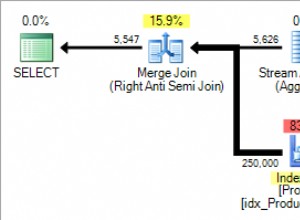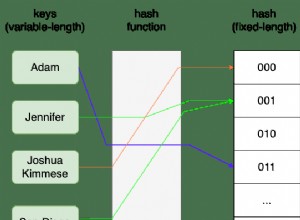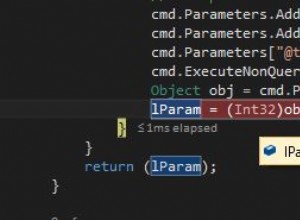Sie sollten alle Datenbankinformationen in application/config/database.php´ bereitstellen
Normalerweise würden Sie die Standard-Datenbankgruppe wie folgt festlegen:
$db['default']['hostname'] = "localhost";
$db['default']['username'] = "root";
$db['default']['password'] = "";
$db['default']['database'] = "database_name";
$db['default']['dbdriver'] = "mysql";
$db['default']['dbprefix'] = "";
$db['default']['pconnect'] = TRUE;
$db['default']['db_debug'] = FALSE;
$db['default']['cache_on'] = FALSE;
$db['default']['cachedir'] = "";
$db['default']['char_set'] = "utf8";
$db['default']['dbcollat'] = "utf8_general_ci";
$db['default']['swap_pre'] = "";
$db['default']['autoinit'] = TRUE;
$db['default']['stricton'] = FALSE;
Beachten Sie, dass die Anmeldeinformationen und Einstellungen im Array mit dem Namen $db['default'] bereitgestellt werden .
Sie können dann eine weitere Datenbank in einem neuen Array hinzufügen - nennen wir sie 'anotherdb'.
$db['anotherdb']['hostname'] = "localhost";
$db['anotherdb']['username'] = "root";
$db['anotherdb']['password'] = "";
$db['anotherdb']['database'] = "another_database_name";
$db['anotherdb']['dbdriver'] = "mysql";
$db['anotherdb']['dbprefix'] = "";
$db['anotherdb']['pconnect'] = TRUE;
$db['anotherdb']['db_debug'] = FALSE;
$db['anotherdb']['cache_on'] = FALSE;
$db['anotherdb']['cachedir'] = "";
$db['anotherdb']['char_set'] = "utf8";
$db['anotherdb']['dbcollat'] = "utf8_general_ci";
$db['anotherdb']['swap_pre'] = "";
$db['anotherdb']['autoinit'] = TRUE;
$db['anotherdb']['stricton'] = FALSE;
Wenn Sie nun die zweite Datenbank verwenden möchten, gehen Sie einfach
$DB_another = $this->load->database('anotherdb', TRUE);
und dann statt $this->db->foo() , werden Sie $DB_another->foo()
und Sie können dies auf mehrere Gruppen wie diese erweitern
$DB2 = $this->load->database('anotherdb1', TRUE);
$DB3 = $this->load->database('anotherdb2', TRUE);
Einzelheiten finden Sie hier:http://ellislab.com/codeigniter/ user-guide/database/connecting.html




